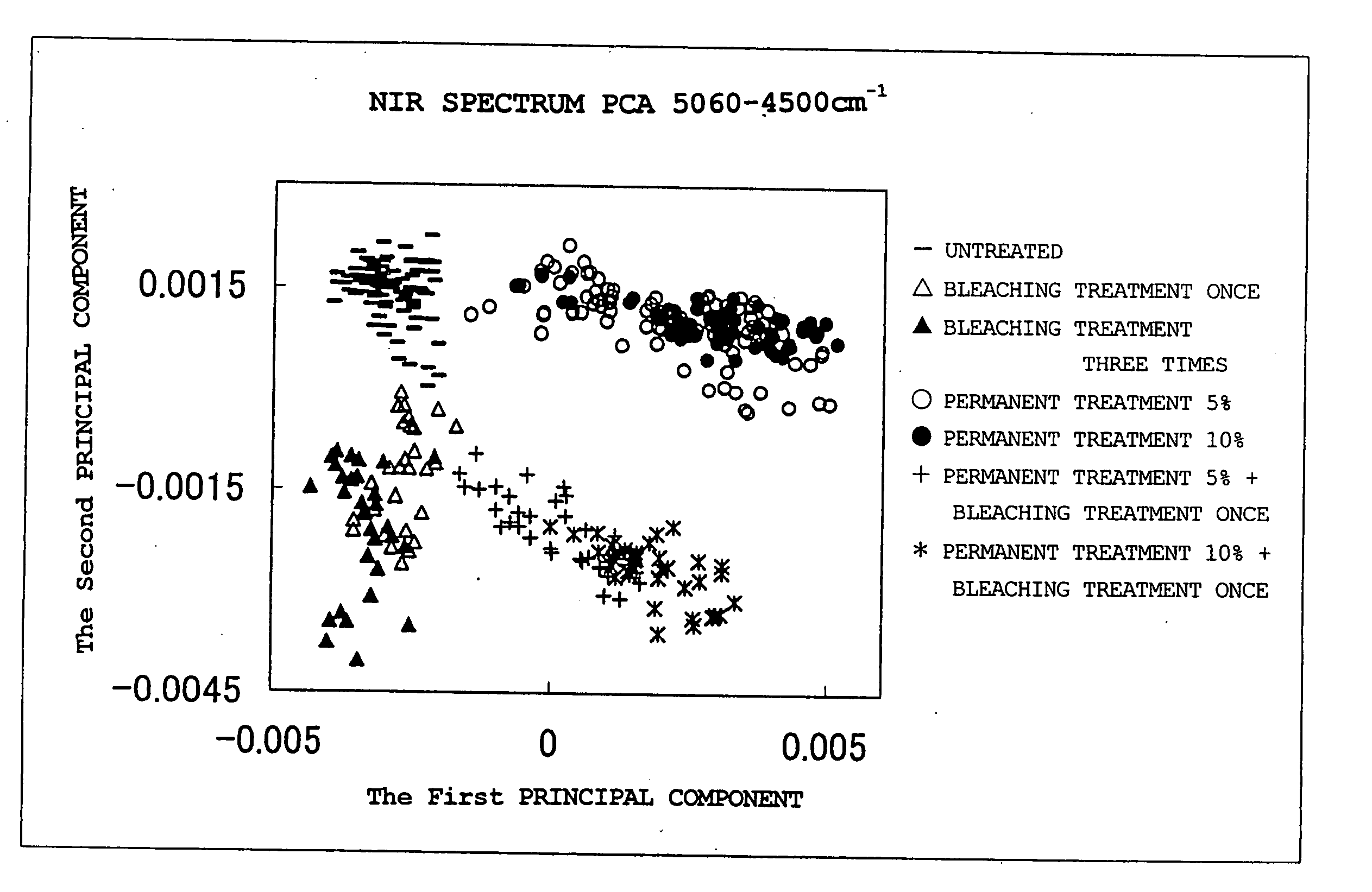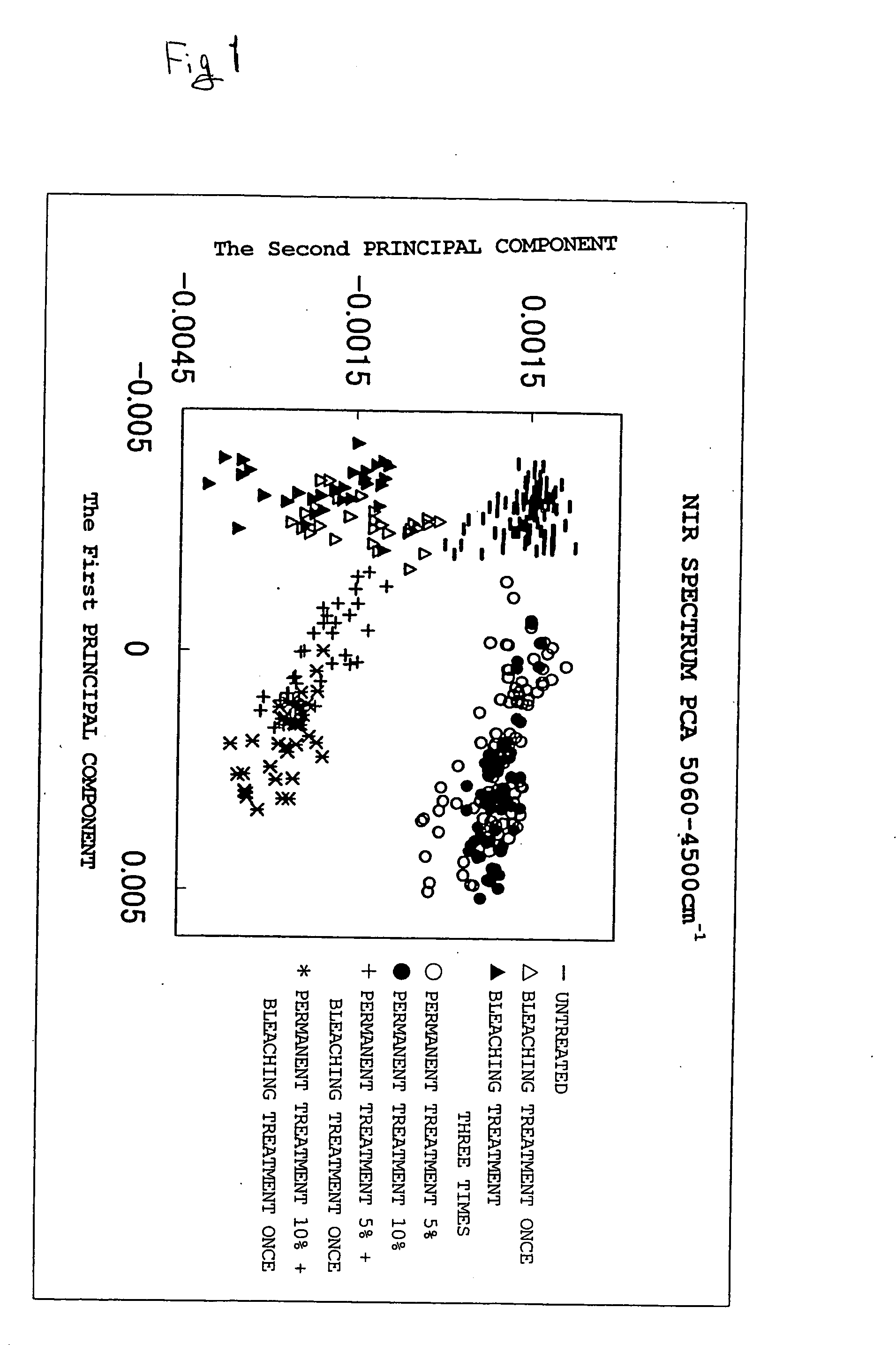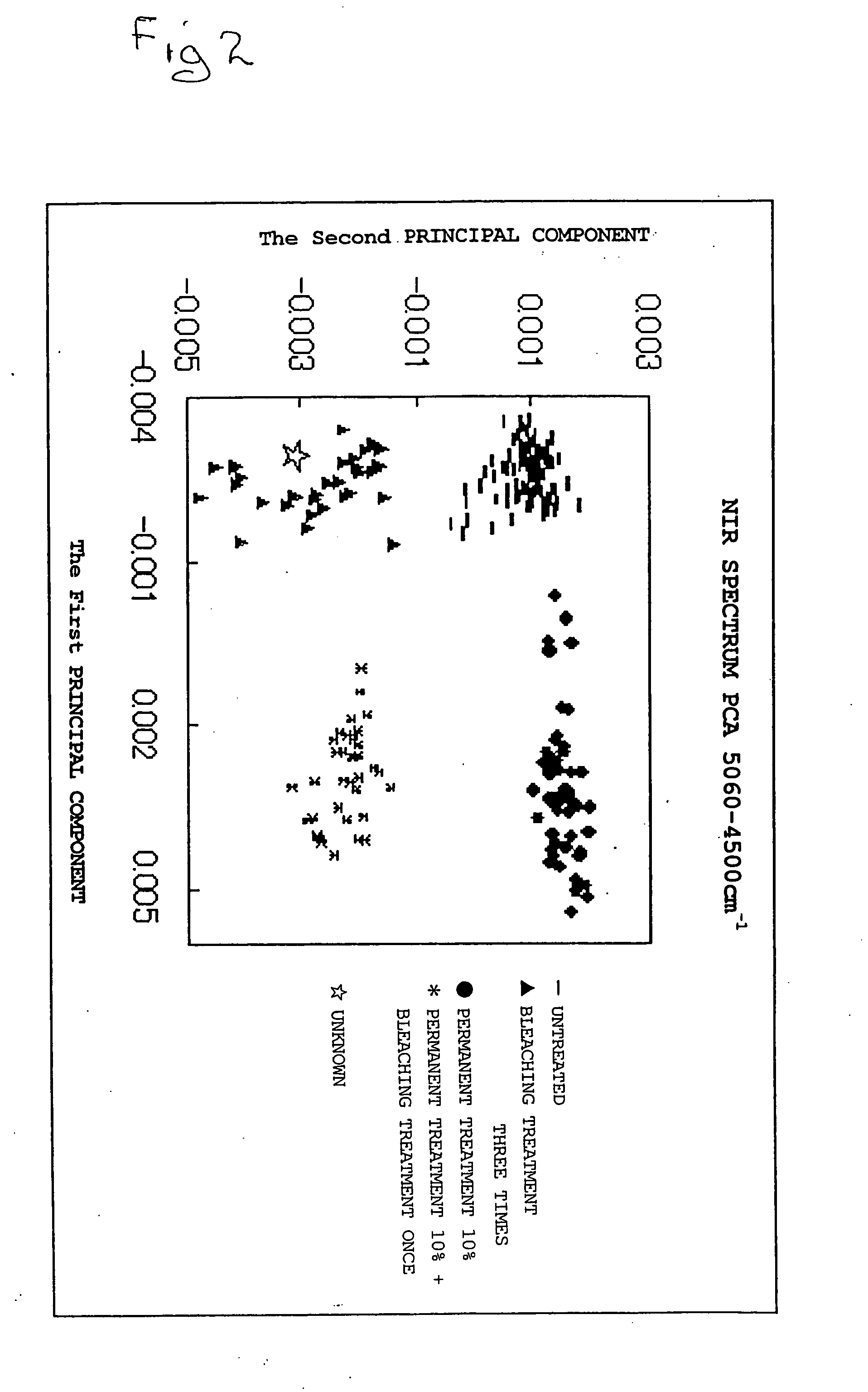Method of judging degree of hair damage
a hair damage and degree technology, applied in the field of hair damage degree evaluation, can solve the problems of qualitative damage owing to those treatments, the degree of likelihood of being easily damaged by the treatments, etc., and achieve the effect of preventing hair damage, determining the hysteresis of treatment, and repairing and preventing hair damag
- Summary
- Abstract
- Description
- Claims
- Application Information
AI Technical Summary
Benefits of technology
Problems solved by technology
Method used
Image
Examples
example 1
[0112] The near infrared absorption spectra of the hair samples prepared in PREPARATIONS 1 to 3 OF HAIR SAMPLE were subjected to data processing for a wavenumber region 5,060 to 4,500 cm−1. To be specific, after subjecting the spectrum to mean centering, standard normal variant and secondary differentiation were performed.
[0113] The spectra subjected to data processing were divided every 4 cm−1, and the spectral value for each divided spectrum (secondary differentiated value of an absorbance) was calculated. A matrix was created, in which the calculated spectral values were arranged in rows and the contents of the treatment applied to the hair (no treatment, 5% or 10% permanent treatment, bleaching treatment once or 3 times, or combination of a permanent treatment and a bleaching treatment) were arranged in columns. The created matrix was subjected to multivariate analysis using principal component analysis. A two-dimensional scatter diagram having a first principal component as an...
example 2
[0119] The near infrared absorption spectra of the untreated samples, the three times bleaching treated samples, the 10% permanent treated samples, and the 10% permanent treated+bleaching treated samples out of the hair samples, and a near infrared absorption spectrum of a bundle of hairs whose degree of damages caused by a permanent treatment and by an oxidation treatment are unknown, were subjected to data processing and principal component analysis in the same manner as in Example 1.
[0120]FIG. 2 shows the scatter diagram created from the obtained results of the analysis. As shown in FIG. 2, the respective sample groups having different contents of treatments were classified very clearly. In addition, the plot position of the result of the bundle of hairs whose degree of damages was unknown allowed one to evaluate that the hairs were subjected to bleaching treatment 3 times.
example 3
[0121] The near infrared absorption spectra of the untreated samples, the 3 times bleaching treated samples, the 10% permanent treated samples, and the 10% permanent treated+bleaching treated samples out of the hair samples were subjected to data processing and principal component analysis in the same manner as in Example 1, except that the wavenumber region of a spectrum to be analyzed was changed from 5,060 to 4,500 cm−1 to 6,000 to 5,500 and 5,060 to 4,500 cm−1.
[0122]FIG. 3 shows the scatter diagram created from the obtained results of the analysis. As shown in FIG. 3, the respective sample groups having different contents of treatments were classified clearly.
[0123] Therefore, the near infrared absorption spectrum of a hair sample whose degree of damage is unknown is similarly subjected to data processing and multivariate analysis together with the above samples, whereby the degree of a damage of the hair sample whose degree of damage is unknown can be evaluated.
PUM
 Login to View More
Login to View More Abstract
Description
Claims
Application Information
 Login to View More
Login to View More - R&D
- Intellectual Property
- Life Sciences
- Materials
- Tech Scout
- Unparalleled Data Quality
- Higher Quality Content
- 60% Fewer Hallucinations
Browse by: Latest US Patents, China's latest patents, Technical Efficacy Thesaurus, Application Domain, Technology Topic, Popular Technical Reports.
© 2025 PatSnap. All rights reserved.Legal|Privacy policy|Modern Slavery Act Transparency Statement|Sitemap|About US| Contact US: help@patsnap.com



